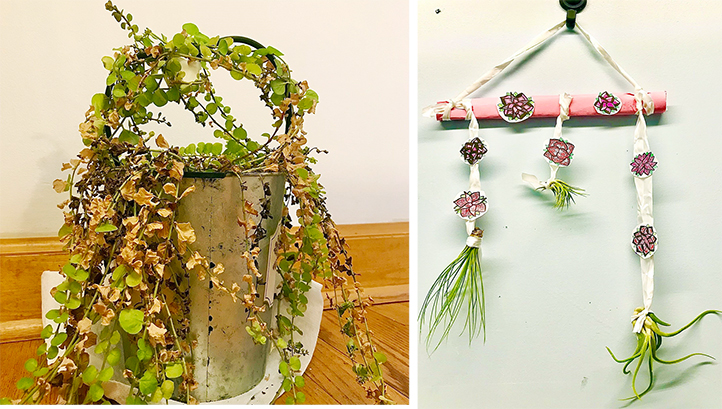“Helping You Find Plants That Work”
by Ana Morlier
Flowers of Pride
Red (Life)
Coleus: Prefers morning sun and afternoon shade (partial shade) and moist, well-drained soil.
Caladium: Medium-bright, indirect light; water when the topmost soil is dry.
Anthurium: Bright, indirect light; moist soil.
Orange (Healing)
Marigolds: Natural pest-repellent; evenly moist, well-drained soil; full sun.
Orange Pansy: Prefers morning sun and afternoon shade (partial shade) and moist, well-drained soil.
Dahlia: Well-drained soil; full sun.
Yellow (New Ideas/Sunlight)
Lily: Keep soil moist; full sun to partial shade.
Carnations: Keep soil moist; full sun to partial shade.
Daffodil: Well drained soil; full sun.
Green (Prosperity/Nature)
Bells of Ireland: Full sun to partial shade; well-drained soil.
Creeping Jenny: Moist soil; partial shade.
Sorrel: Full to part sun; moist soil.
Blue (Harmony/Serenity)
Hydrangea: Moist, well-drained soil; full sun to partial shade. A deeper blue will be present with more soil acidity.
Perennial Geranium: Moist, well-drained soil; full sun to partial shade.
Morning Glory: Well-drained soil; full sun.
Purple (Spirit)
Bellflower: Well-drained soil; full sun.
Moses-in-the Cradle: Well-drained soil; full sun.
Cordyline ‘Tango’: Prefers cooler temperatures; if its leaves turn brown, an excess of fluoride may be present. Use bottled water instead and keep moist.
Black (Diversity) & Brown (Inclusivity)
Black Velvet Petunia: Full sun; well-drained, moist soil.
Black Coral Elephant Ear: Prefers warmer temperatures; full to partial sun; well-drained soil; can endure drought.
Coleus: One of the easiest plants to grow; cool, evenly moist, well-drained soil.
White/Pink (Representative of transgender community)
White Lilac: Full sun; well-drained soil.
Daisy: Full sun; moist soil; tolerant to drought.
Mosaic/Nerve Plant: Indirect light; evenly moist soil.
Bleeding Heart: Part to full shade; keep soil moist.
With these flowers, your garden will be a rainbow of inclusivity and aesthetically pleasing. Thanks for reading, and happy Pride month!
Credit to Almanac, Balcony Garden Web, Birds and Blooms, Bloomscape, Country living, Flower Glossary, Forbes, LGBTQIA Resource Center, Masterclass, Petal Republic, Plant legend, Proflowers, Sunday Gardener, The Leafy Place, The Spruce, and Verywell mind.



